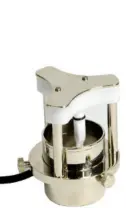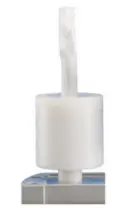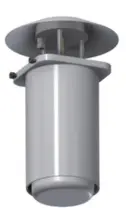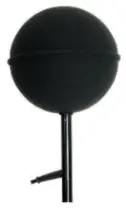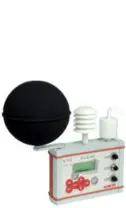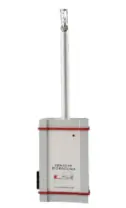The ISO 7243 standard, in Annex B (section B-2), provides a description of the sensor used to measure the Black Globe Temperature (Tg). A sensor with a thermosensitive element positioned in the center of a hollow sphere is described with the following characteristics:
- Diameter: 15 cm;
- Average emission coefficient: 0.95 (emissivity: 95% of the radiation is absorbed).
In order for the emission coefficient to reach this value, the sphere must be painted with a matt black paint. To ensure the shortest possible response time, the sphere material must have a high thermal conductivity. The standard mentions “copper” as a material capable of providing a shorter response time.
Furthermore, the standard describes a sphere with a diameter of 15 cm, but also provides the possibility of using spheres with different diameters. Annex C of the standard, entitled “Alternative globes”, provides instructions on how to correct the measurements performed using diameters other than 15 cm. However, some important considerations are mentioned in the standard:
- The globe temperature sensor as specified in Annex B is the only sensor specification that meets the requirement;
- As an approximation, globes that vary from the specification may be used if a valid correction is made to provide estimation of the temperature;
- The correction formula can be used to make the correction;
- It is important to note that making a correction for globe size involves measurements of the environment (e.g. air temperature, air speed);
- The accuracy of any prediction will therefore be dependent on the accuracy of the environmental measures. Errors in measurement can be significant so any correction will include these inaccuracies;
- It can be seen that, to make a correction for globe size, air speed is required. If air velocity is not known, then it will not be possible to make a correction.


